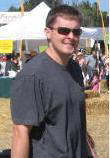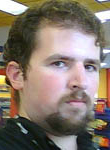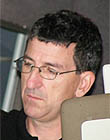|
|
 
|
|
Author
|
Topic: Sequences of Inception shot in 65MM
|
Geoff Jones
Jedi Master Film Handler

Posts: 579
From: Broomfield, CO, USA
Registered: Feb 2006
|
 posted 03-26-2010 02:58 PM
posted 03-26-2010 02:58 PM





http://www.collider.com/2010/03/25/director-christopher-nolan-and-producer-emma-thomas-interview-inception-they-talk-3d-what-kind-of-cameras-they-used-pre-viz-wb-and-a-lot-more/
quote:
Nolan: We shot the film with a mixture of mostly the predominant bulk of the film is anamorphic 35mm, which is the best quality sort of practical format to shoot on by far. We shot key sequences on 65mm, 5 perf not 15 perf, and we shot VistaVision on certain other sequences. So we’ve got a negative - a set of negative - that’s of the highest possible quality except IMAX.
We didn’t feel that we were going to be able to shoot in IMAX because of the size of the cameras because this film given that it deals with a potentially surreal area, the nature of dreams and so forth, I wanted it to be as realistic as possible. Not be bound by the scale of those IMAX cameras, even though I love the format dearly. So we went to the next best thing which was 65mm. So we have the highest quality image of any film that’s being made and that allows us to reformat the film for any distribution form that we’d like to put it in. We’re definitely going to do an IMAX release. We’re excited about doing that and using our original negative 65mm photography to maximize the effect of that release.
3D I think is an interesting development in movies or the resurgence of 3D. It’s something we’re looking at and watching. There are certain limitations of shooting in 3D. You have to shoot on video, which I’m not a fan of. I like shooting on film.
And so then you’re looking at post-conversion processes which are moving forward in very exciting ways. So really, for me, production of a large scale film is all about recording the best, highest quality image possible so that you can then put it in any theatre in the best way possible. And 65mm film, IMAX film, VistaVision, 35mm, that’s the way you do that.
| IP: Logged
|
|
|
|
|
|
|
|
|
|
|
|
|
|
|
|
|
|
|
|
All times are Central (GMT -6:00)
|
|
Powered by Infopop Corporation
UBB.classicTM
6.3.1.2
The Film-Tech Forums are designed for various members related to the cinema industry to express their opinions, viewpoints and testimonials on various products, services and events based upon speculation, personal knowledge and factual information through use, therefore all views represented here allow no liability upon the publishers of this web site and the owners of said views assume no liability for any ill will resulting from these postings. The posts made here are for educational as well as entertainment purposes and as such anyone viewing this portion of the website must accept these views as statements of the author of that opinion
and agrees to release the authors from any and all liability.
|

 Home
Home
 Products
Products
 Store
Store
 Forum
Forum
 Warehouse
Warehouse
 Contact Us
Contact Us




 Printer-friendly view of this topic
Printer-friendly view of this topic














